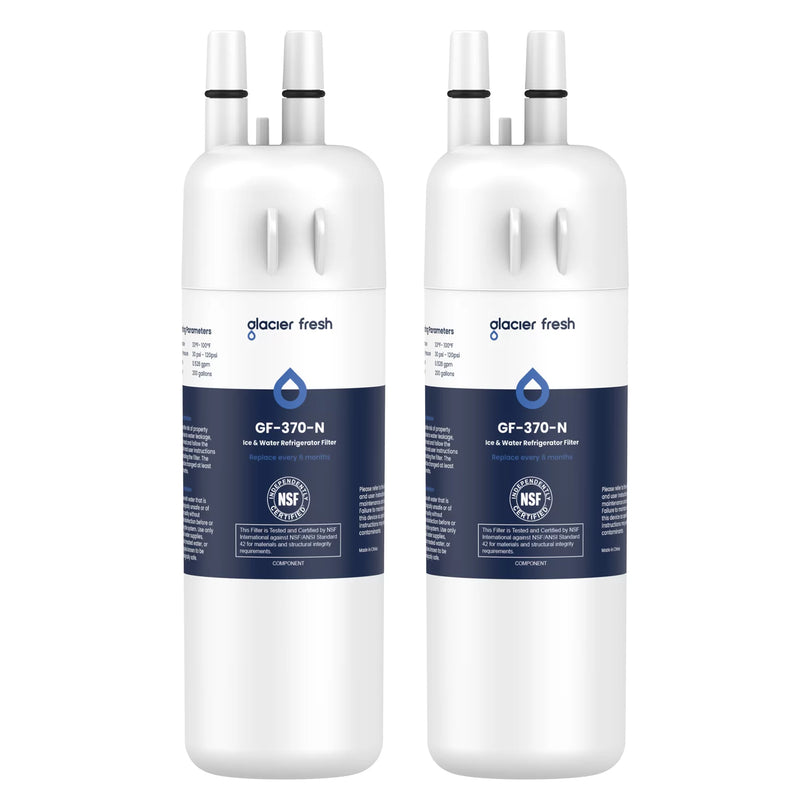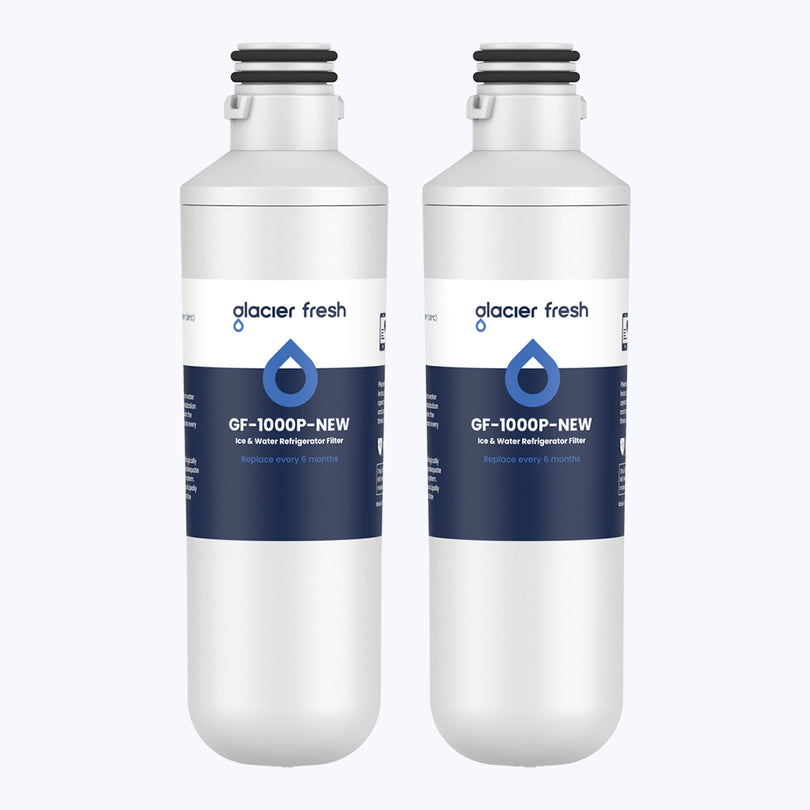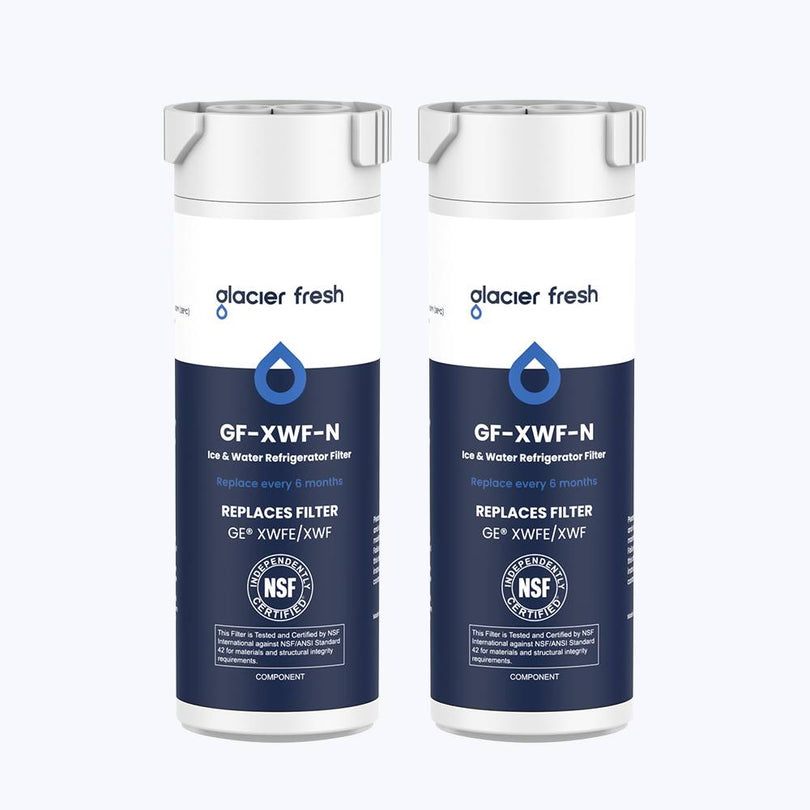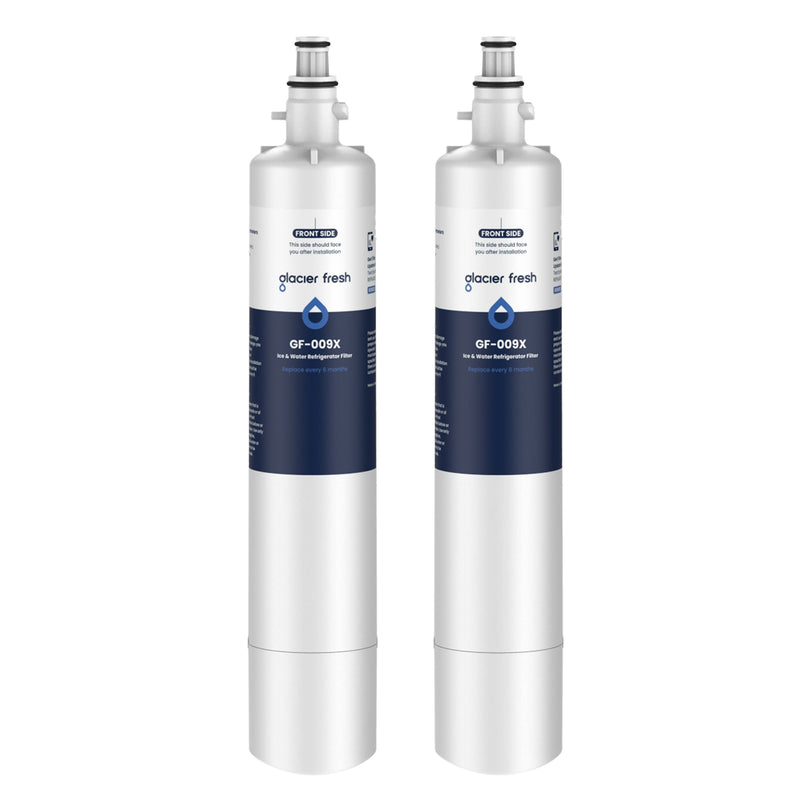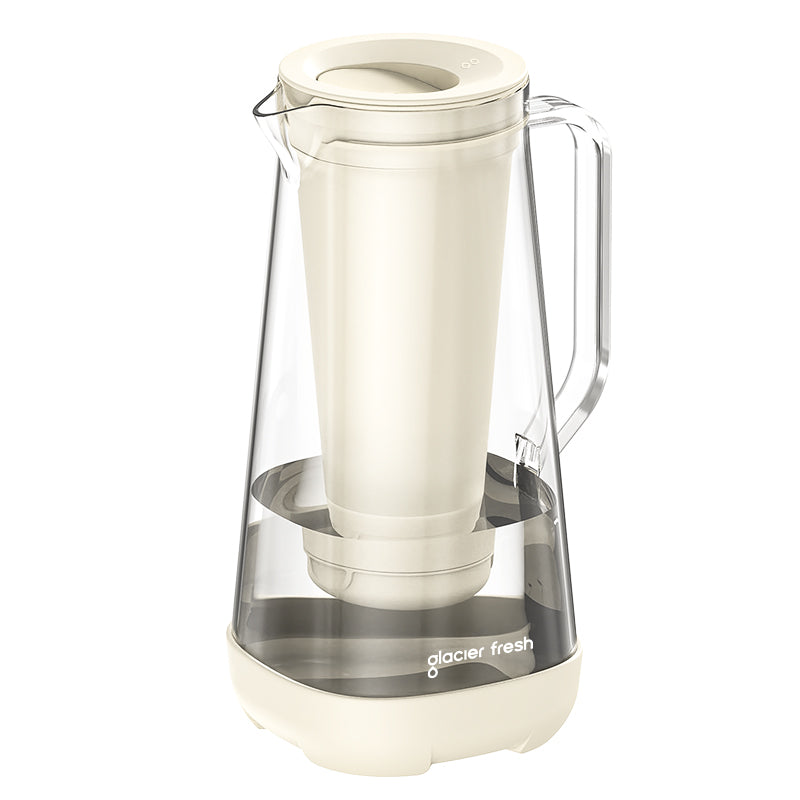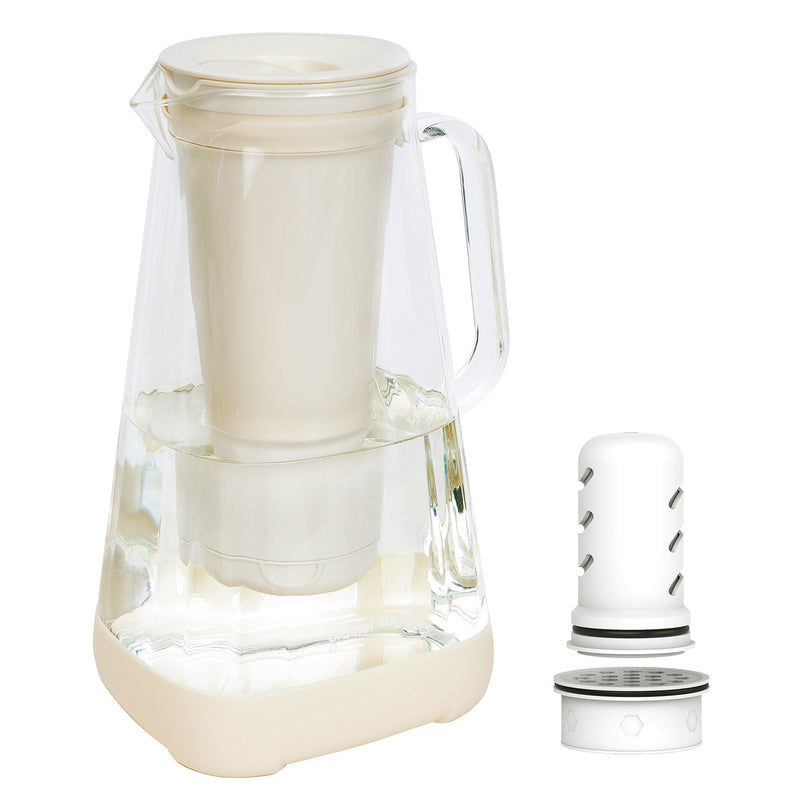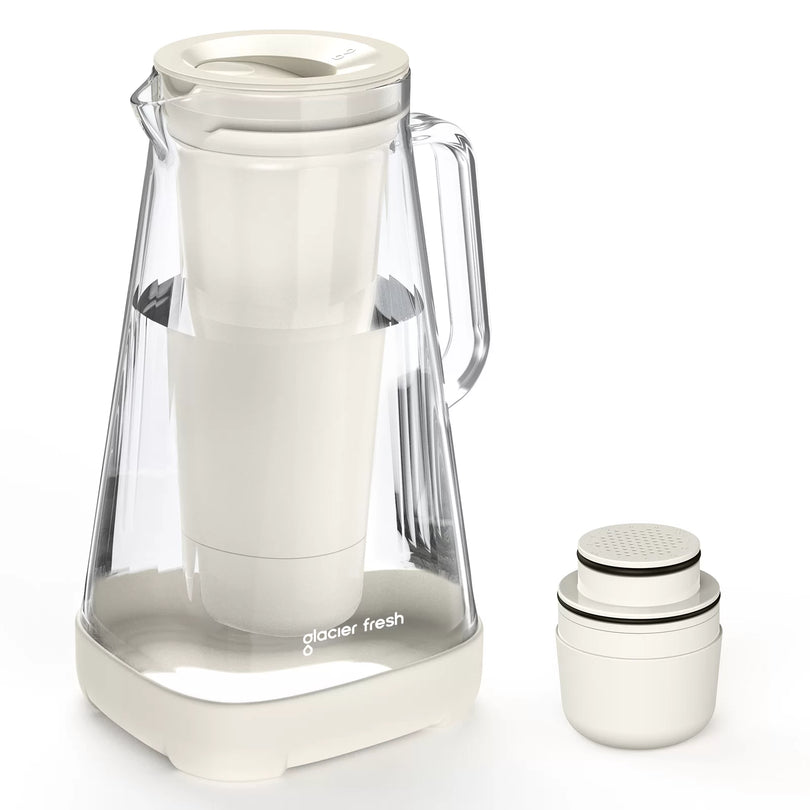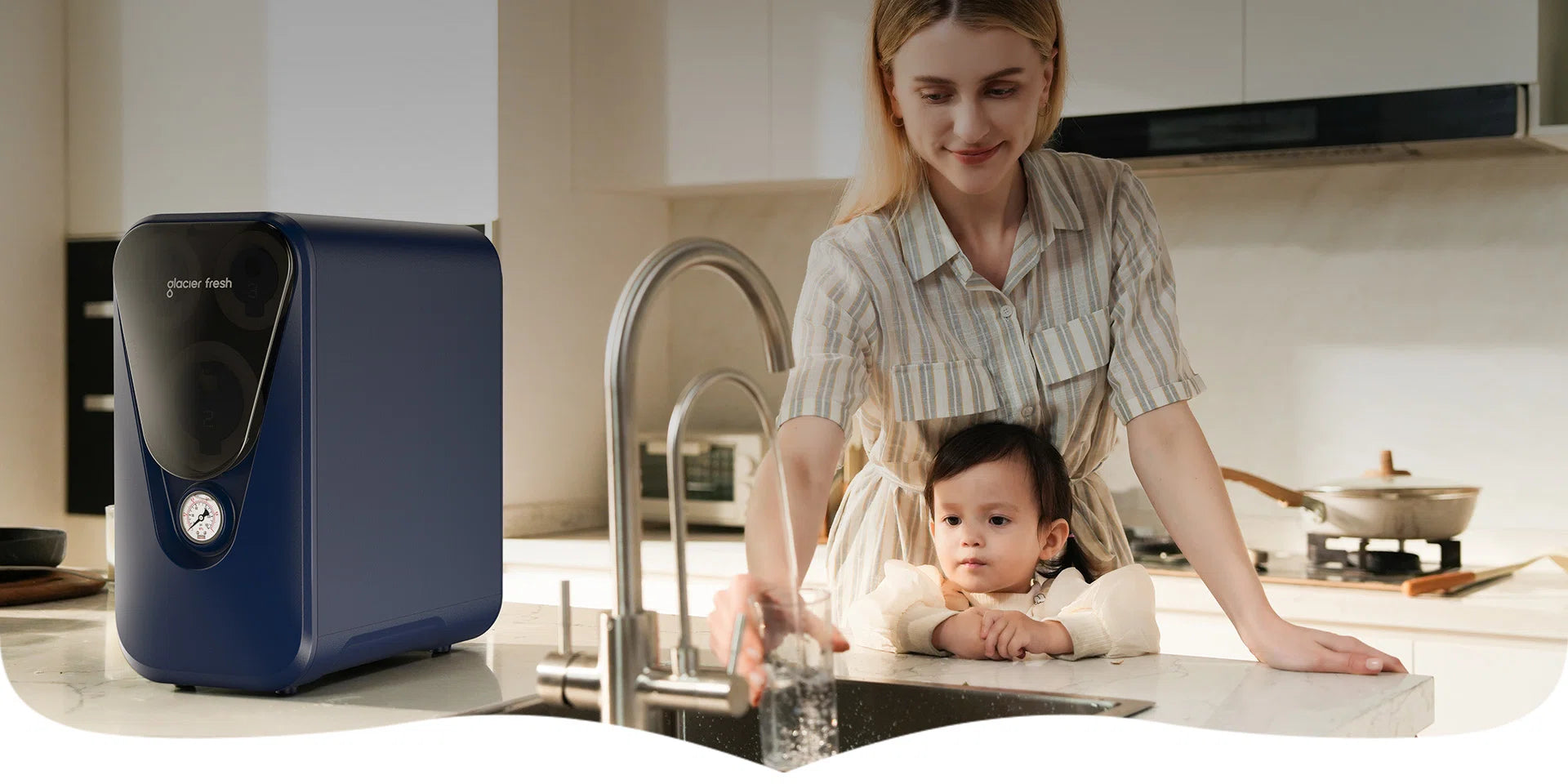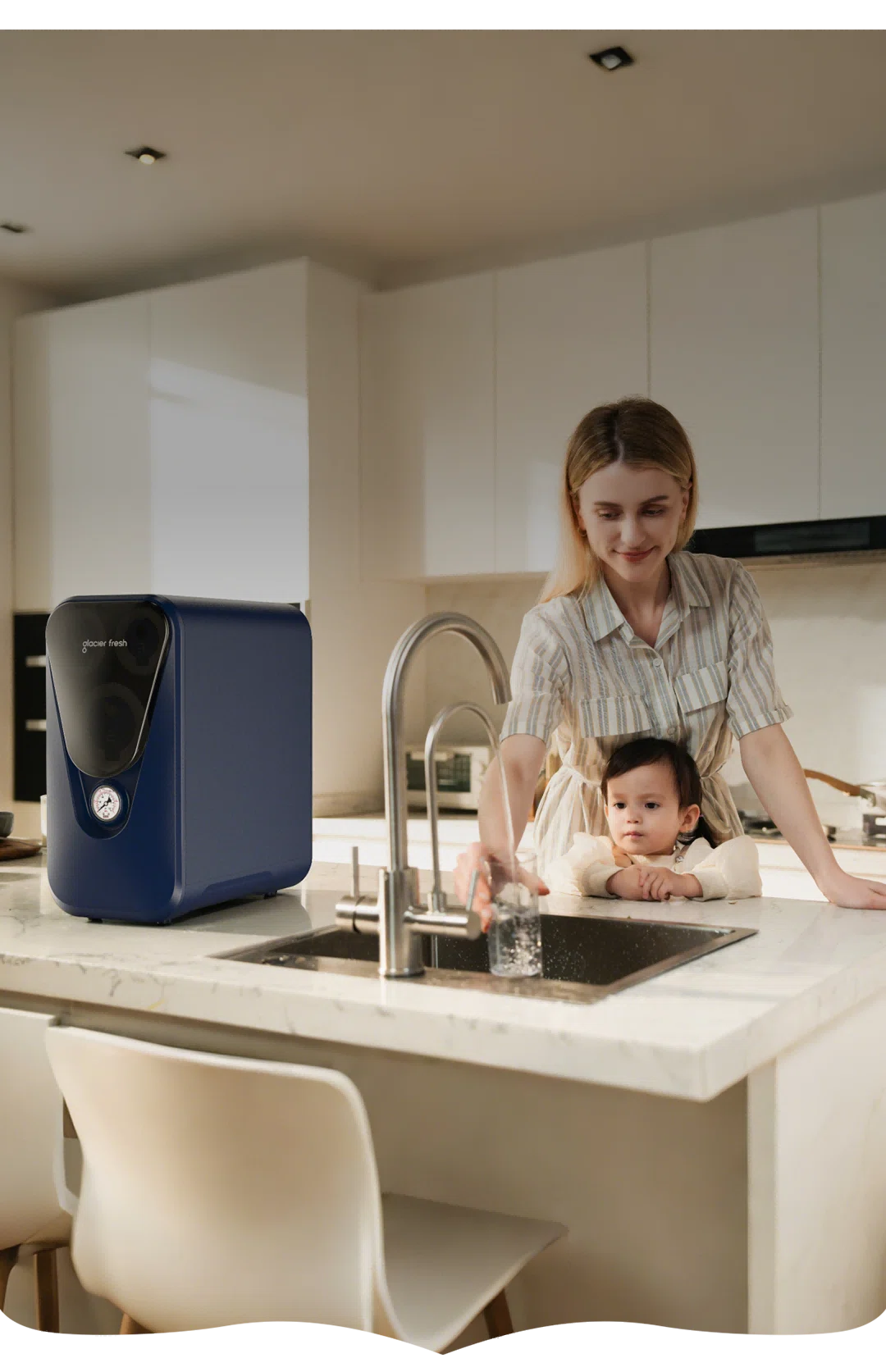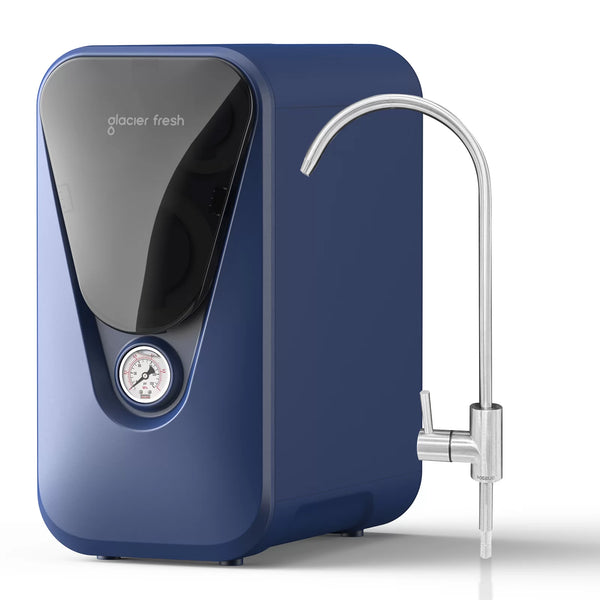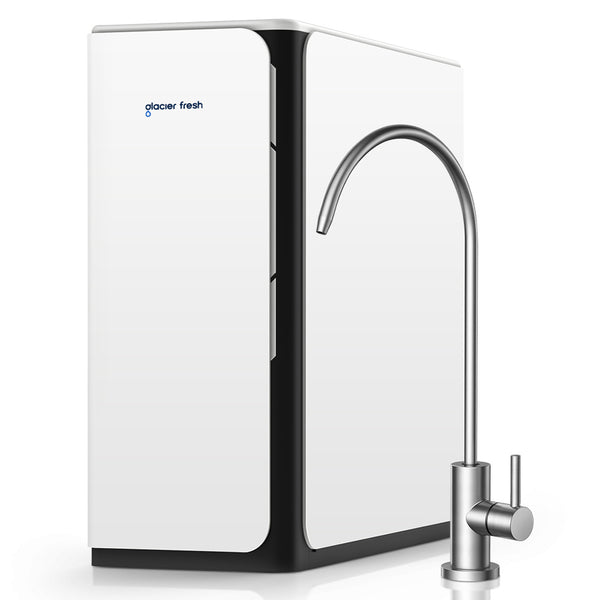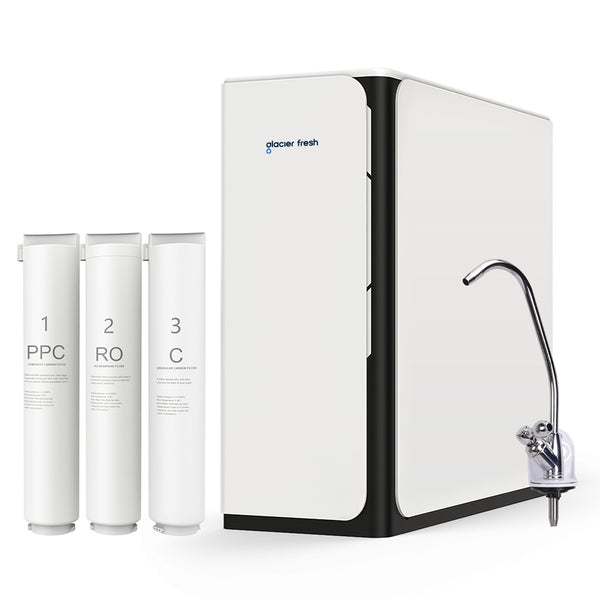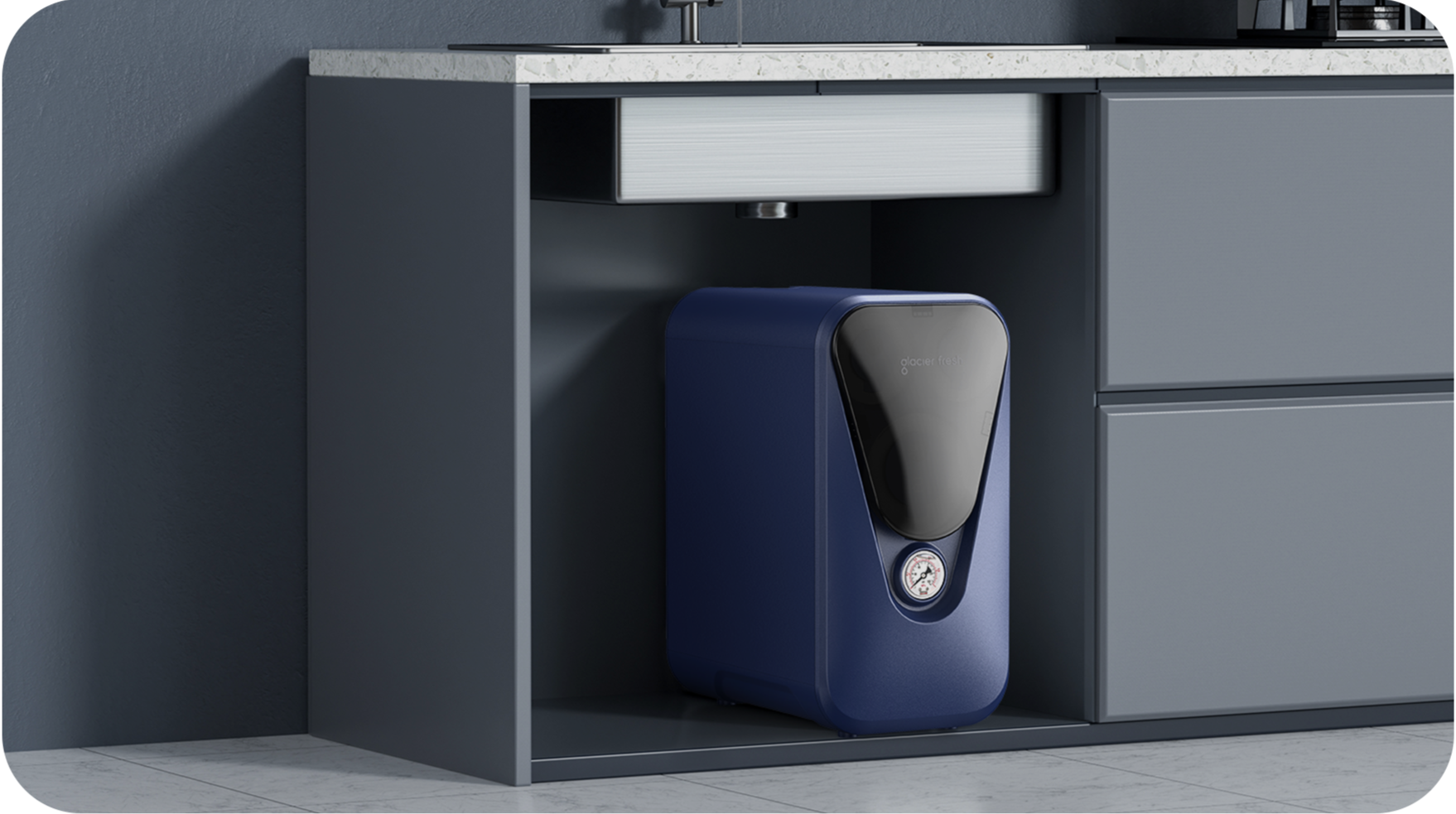Umkehrosmoseanlagen
Einfacher zu installierendes 800GPD Umkehrosmosesystem, Untertisch-RO-System – Glacierfresh U03
Eine Umkehrosmoseanlage entfernt mit einem Vorfilter Sedimente und Chlor aus dem Wasser, bevor sie das Wasser durch eine semipermeable Membran presst, um gelöste Feststoffe zu entfernen. Nachdem das Wasser die RO-Membran verlassen hat, durchläuft es einen Nachfilter, um das Trinkwasser zu reinigen, bevor es in einen speziellen Wasserhahn gelangt.
Das Untertisch-Wasserreinigungssystem GlacierFresh U01 ist unser Untertisch-Wasserfiltergerät der ersten Generation mit 400 GPD, geeignet für kleine Häuser oder Wohnungen.
Das stromlose Umkehrosmosesystem GlacierFresh U03 ist die zweite Generation der Untertisch-RO-Systemmaschine mit 800 GPD. Geeignet für Orte mit hohem lokalem Wasserdruck oder häufigen Stromausfällen. Versorgt Sie schnell mit frischem, sauberem Wasser.
Das GlacierFresh-U03 E800G RO-System ist unser Untertisch-RO-System der dritten Generation, ausgestattet mit einem Netzteil und einer eingebauten Druckerhöhungspumpe, geeignet für Bereiche mit niedrigem Wasserdruck.
What YouTube Creators are saying
Ja, Umkehrosmose-Wasserfiltersysteme (RO) produzieren im Rahmen des Filterprozesses Abwasser. Um Verunreinigungen vom sauberen Wasser zu trennen, drücken RO-Systeme das Wasser durch eine semipermeable Membran, die jedoch nicht vollständig durchläuft. Ein Teil wird zum Ausspülen der zurückgewiesenen Verunreinigungen verwendet und wird zu Abwasser. Herkömmliche Systeme können pro Gallone gereinigtem Wasser bis zu 15 Liter verschwenden, was Bedenken hinsichtlich der Wassereffizienz im Haushalt aufwirft.
Moderne Untertisch-Wasserfiltersysteme wie der Glacierfresh RO-Filter haben dieses Verhältnis jedoch deutlich verbessert. Mit einem Abwasserverhältnis von 3:1 erfüllt der Glacierfresh Untertisch-Wasserfilter sowohl wirtschaftliche als auch ökologische Standards, indem er Abfall reduziert und die Filtereffizienz optimiert. Dies macht ihn zu einer ausgezeichneten Wahl für umweltbewusste Haushalte, die einen zuverlässigen Untertisch-Wasserfilter suchen, der sauberes Wasser mit intelligentem Wasserverbrauch in Einklang bringt. Für alle, die einen effektiven und nachhaltigen Untertisch-Wasserfilter installieren möchten, bietet dieses System sowohl Leistung als auch Sicherheit.
Ein Wasserfilter für die Spüle leitet Leitungswasser durch eine oder mehrere Filterstufen, um Verunreinigungen zu entfernen und den Geschmack zu verbessern. Die meisten Modelle beginnen mit einer Sedimentschicht, die Schmutz und Rost zurückhält, gefolgt von Aktivkohle, die Chlor, Gerüche und Chemikalien reduziert. Fortschrittlichere Optionen, wie Umkehrosmoseanlagen für den Untertisch, verwenden eine feine Membran, die Schwermetalle, Fluorid und andere Schadstoffe blockiert, sodass Sie sicheres und wohlschmeckendes Wasser direkt aus Ihrem Wasserhahn erhalten.
Ein effizienter Umkehrosmose-Wasserfilter hilft nicht nur, Wasser zu sparen, sondern senkt auch langfristig die Betriebskosten durch Abfallminimierung. Systeme mit einem besseren Verhältnis von Reinwasser zu Abwasser sind nachhaltiger und kostengünstiger im täglichen Gebrauch, insbesondere in Gebieten mit begrenzten Wasserressourcen. Achten Sie bei der Auswahl eines Filtersystems immer auf dieses Verhältnis, da es die Gesamtleistung und Effizienz des Umkehrosmose-Wasserfilters direkt widerspiegelt. Mit der Wahl eines Modells mit einem guten Verhältnis investieren Sie in sauberes, nachhaltiges Wasser ohne unnötigen Abfall.
RO filtration ensures that lead, chlorine, fluoride, and other impurities are removed from your drinking water. Reverse Osmosis water filtration is unrivaled when it comes to removing impurities from water in an efficient, cost-effective method.
Der Hauptvorteil eines Umkehrosmose-Wasserfilters unter der Spüle ist seine außergewöhnliche Fähigkeit, ein breites Spektrum schädlicher Verunreinigungen wie Blei, Fluorid, Chlor, Schwermetalle und sogar bestimmte Bakterien zu entfernen. Dieser Filterprozess presst das Wasser durch eine semipermeable Membran, die nur reine Wassermoleküle passieren lässt. Dadurch liefert ein Umkehrosmose-Wasserfilter unter der Spüle sauberes, sicheres und wohlschmeckendes Trinkwasser direkt aus dem Wasserhahn und ist damit eine zuverlässige Lösung für Haushalte, denen die Wasserqualität am Herzen liegt.
Neben der Reinheit bietet der Umkehrosmose-Wasserfilter unter der Spüle unübertroffenen Komfort und langfristigen Wert. Unauffällig unter der Küchenspüle installiert, liefert er kontinuierlich gefiltertes Wasser, ohne dass sperrige Flaschen oder Unterschränke erforderlich sind. Mit der Zeit trägt der Umkehrosmose-Wasserfilter unter der Spüle dazu bei, Plastikmüll zu reduzieren und Geld im Vergleich zum Kauf von Flaschenwasser zu sparen. Für alle, die eine nachhaltige, gesundheitsbewusste und kostengünstige Wasserlösung suchen, ist dieses System eine der besten Optionen auf dem Markt.
Ein RO-Wasserfilter presst Wasser durch eine semipermeable Membran, die Partikel bis zu einer Größe von 0,0001 Mikrometern blockiert. Dadurch kann ein RO-Wasserfilter Verunreinigungen entfernen, die herkömmliche Kohle- oder Sedimentfilter nicht verarbeiten können – wie Arsen, Fluorid, Nitrate und gelöste Feststoffe (TDS). Die meisten Standardfilter entfernen nur Chlor, Sedimente und größere Partikel, ein RO-Wasserfilter bietet jedoch eine deutlich gründlichere Reinigung.
Darüber hinaus handelt es sich bei einem RO-Wasserfilter oft um ein mehrstufiges System, das typischerweise Vorfilter, eine Umkehrosmosemembran und einen Nachfilter zur Feinreinigung umfasst. Dieser mehrschichtige Aufbau gewährleistet sowohl chemische als auch mikrobielle Sicherheit. Während Standardfilter für die Basisfiltration hervorragend geeignet sind, ist ein RO-Wasserfilter ideal für Menschen, die ultrareines Wasser zum Trinken, Kochen oder sogar für Aquarien benötigen.
Die Installation eines Untertisch-Wasserfiltersystems dauert in der Regel 1 bis 2 Stunden, abhängig von Ihrer Erfahrung mit Sanitärinstallationen und der Komplexität des Systems. Die meisten Untertisch-Wasserfilterpakete enthalten eine ausführliche Anleitung und alle notwendigen Teile, sodass eine einfache Selbstmontage möglich ist. Sie benötigen in der Regel eine Bohrmaschine, einen Schraubenschlüssel und etwas Geduld, um das System an Ihre Kaltwasserleitung anzuschließen und bei Bedarf einen separaten Wasserhahn zu installieren.
Wer nicht selbst an Sanitärinstallationen herumbasteln möchte, kann einen Fachmann beauftragen, um eine saubere, leckagefreie Installation zu gewährleisten. Die Installation dauert oft weniger als eine Stunde. Nach der Installation ist ein Untertisch-Wasserfiltersystem unsichtbar und erfordert nur minimale Wartung. Ob Sie zur Miete oder in einem festen Zuhause wohnen, ein Untertisch-Wasserfiltersystem bietet ein ausgewogenes Verhältnis aus Komfort und Leistung, ohne Ihre Arbeitsfläche zu überladen.
Die RO-Membran in einem Untertisch-RO-System hält in der Regel 2 bis 3 Jahre, während die Vor- und Nachfilter je nach Wasserqualität und Nutzung alle 6 bis 12 Monate ausgetauscht werden müssen. Regelmäßige Wartung Ihres Untertisch-RO-Systems ist unerlässlich, um Verstopfungen, Bakterienbildung und Leistungseinbußen zu vermeiden. Einige Geräte verfügen über Erinnerungen oder Anzeigen, die Ihnen helfen, den Überblick über Filterwechsel zu behalten.
Wenn Sie einen Abfall des Wasserdrucks oder eine Geschmacksveränderung bemerken, ist dies oft ein Zeichen dafür, dass Ihr Untertisch-RO-System gewartet werden muss. Die Investition in ein System mit leicht austauschbaren Kartuschen spart Zeit und Aufwand. Indem Sie Ihr Untertisch-RO-System in einem Top-Zustand halten, gewährleisten Sie gleichbleibende Wasserreinheit und verlängern die Lebensdauer des gesamten Systems.
RO filtration ensures that lead, chlorine, fluoride, and other impurities are removed from your drinking water. Reverse Osmosis water filtration is unrivaled when it comes to removing impurities from water in an efficient, cost-effective method.
Die meisten Untertisch-Wasserfilterkartuschen müssen je nach Wasserqualität und täglichem Verbrauch alle 6 bis 12 Monate ausgetauscht werden. Ein nicht rechtzeitiger Austausch des Untertisch-Wasserfilters kann zu verminderter Wirksamkeit und schlechtem Wassergeschmack führen. Wasser mit hohem Sedimentgehalt kann den Filter schneller verstopfen und seine Lebensdauer verkürzen.
Einige moderne Untertisch-Wasserfiltermodelle verfügen über Filterlebensdaueranzeigen oder Timer, damit Sie Ihren Zeitplan einhalten können. Regelmäßiger Austausch sorgt für optimale Filterung und verlängert die Lebensdauer Ihres gesamten Systems. Die Aktualisierung Ihres Untertisch-Wasserfilters garantiert gleichbleibende Wasserqualität und sorgt für ein sicheres Gefühl.
Ja, viele RO-Wasserfiltersysteme sind für eine einfache Installation zu Hause konzipiert, selbst für Personen mit minimaler Sanitärerfahrung. Diese Kits enthalten in der Regel farbcodierte Schläuche, Schnellkupplungen und eine klare Anleitung. Mit etwas Werkzeug und Geduld können Sie einen RO-Wasserfilter in etwa 1 bis 2 Stunden installieren.
Wenn Sie jedoch nicht gerne unter der Spüle arbeiten oder eine garantiert leckagefreie Installation wünschen, kann ein Klempner den RO-Wasserfilter schnell und professionell installieren. Nach der Installation arbeitet der RO-Wasserfilter automatisch und erfordert lediglich einen regelmäßigen Filterwechsel. Die einfache Bedienung und die hohe Leistung machen ihn für viele Haushalte zu einer praktischen Wahl.
Ein RO-Wasserfilter ist ideal für Familien und Einzelpersonen, die sicheres, gesundes Trinkwasser wünschen. Leitungswasser enthält oft Chlor, Schwermetalle oder gelöste Feststoffe, die Geschmack und Gesundheit beeinträchtigen. Für Kinder, ältere Menschen oder Menschen mit geschwächtem Immunsystem bieten RO-Wassersysteme starken Schutz, indem sie bis zu 99 % der Verunreinigungen entfernen. Sie eignen sich auch für private Brunnen, in denen Nitrate, Bakterien oder überschüssige Mineralien vorhanden sein können. RO-Filter verbessern nicht nur den Geschmack beim Kochen, Kaffee oder im Alltagsgetränk, sondern reduzieren gleichzeitig die Kosten für Flaschenwasser und den Abfall.
Sie eignen sich auch für Menschen mit besonderen Ernährungs- oder medizinischen Bedürfnissen, die einen Mineralstoffüberschuss vermeiden müssen. Umweltbewusste Nutzer legen Wert auf Nachhaltigkeit, und Wohnmobilbesitzer oder Camper verlassen sich auf tragbare Umkehrosmoseanlagen für sicheres Wasser überall. Selbst kleine Cafés nutzen sie, um die Getränkequalität zu verbessern. Kurz gesagt: Umkehrosmose-Wasserfilter sind für alle geeignet, die Wert auf Gesundheit, Komfort und ein sauberes Leben legen.
RO filtration ensures that lead, chlorine, fluoride, and other impurities are removed from your drinking water. Reverse Osmosis water filtration is unrivaled when it comes to removing impurities from water in an efficient, cost-effective method.
The most effective under-sink water filter is usually a reverse osmosis (RO) system. This type of filtration can remove up to 99% of contaminants, including chlorine, lead, fluoride, arsenic, PFAS, and microplastics. Unlike basic carbon filters, RO systems use a semi-permeable membrane that effectively separates dissolved solids and chemicals from the water, providing clean, fresh-tasting drinking water straight from your tap.
A high-quality under-sink water filter often features multiple filtration stages, such as sediment and activated carbon filters, to enhance taste and eliminate odors. It’s also compact, easy to install, and ideal for households seeking a long-term solution to improve both safety and taste. With regular maintenance and timely filter replacement, this system ensures a steady supply of pure water every day.
Installing an under-sink reverse osmosis water filter is straightforward. The GlacierFresh U30 under-sink reverse osmosis system typically takes only half an hour to install. First, turn off the cold water supply valve and clear the space beneath the sink. Connect the inlet fitting to the cold water line, then attach the inlet hose, outlet hose, and drain hose according to the manual. If the system includes a dedicated faucet, drill holes in the sink or countertop and secure it firmly. Tighten all connections to prevent leaks.
The GlacierFresh U03 Under-Sink Reverse Osmosis Water filter offers both drilled and drill-free installation options. The Standard Edition includes a dedicated faucet, while the Elite Edition connects directly to your existing kitchen faucet—eliminating the need for additional drilling, saving labor costs, and maintaining a cleaner countertop. After installation, reopen the water supply, check for leaks, and allow the system to flush for several hours to remove air and carbon residue. Your under-sink reverse osmosis water purifier will deliver clean, great-tasting drinking water directly from your faucet.
An under-sink RO system typically costs between $150 and $600, depending on the model, capacity, and design. Basic 4- or 5-stage systems are more affordable, while advanced tankless under-sink RO systems with smart indicators, high flow rates, and better water-saving technology are priced higher. For instance, the GlacierFresh U03 800G RO System offers strong filtration and efficiency at a mid-range price point.
In addition to the initial purchase, you should consider maintenance costs such as filter and membrane replacements—usually every 6 to 12 months for filters and every 2 to 3 years for membranes. Over time, the cost is offset by the savings from avoiding bottled water, making it a practical and eco-friendly investment for your home.
A modern under-sink RO system is far more efficient than older systems. Traditional RO filters used to waste 3–5 gallons of water for every gallon of purified water, as excess water flushed out impurities during filtration. However, newer designs have significantly reduced this ratio with advanced membranes, improved flow systems, and water-saving valves.
Most high-efficiency under-sink RO systems today achieve a 3:1 pure-to-drain ratio—producing three gallons of purified water for every one gallon wasted. Some even include built-in pressure pumps to further minimize water loss. While some wastewater is inevitable in the RO process, the benefits of cleaner, healthier drinking water and reduced chemical exposure make it a worthwhile and sustainable choice for most households.

